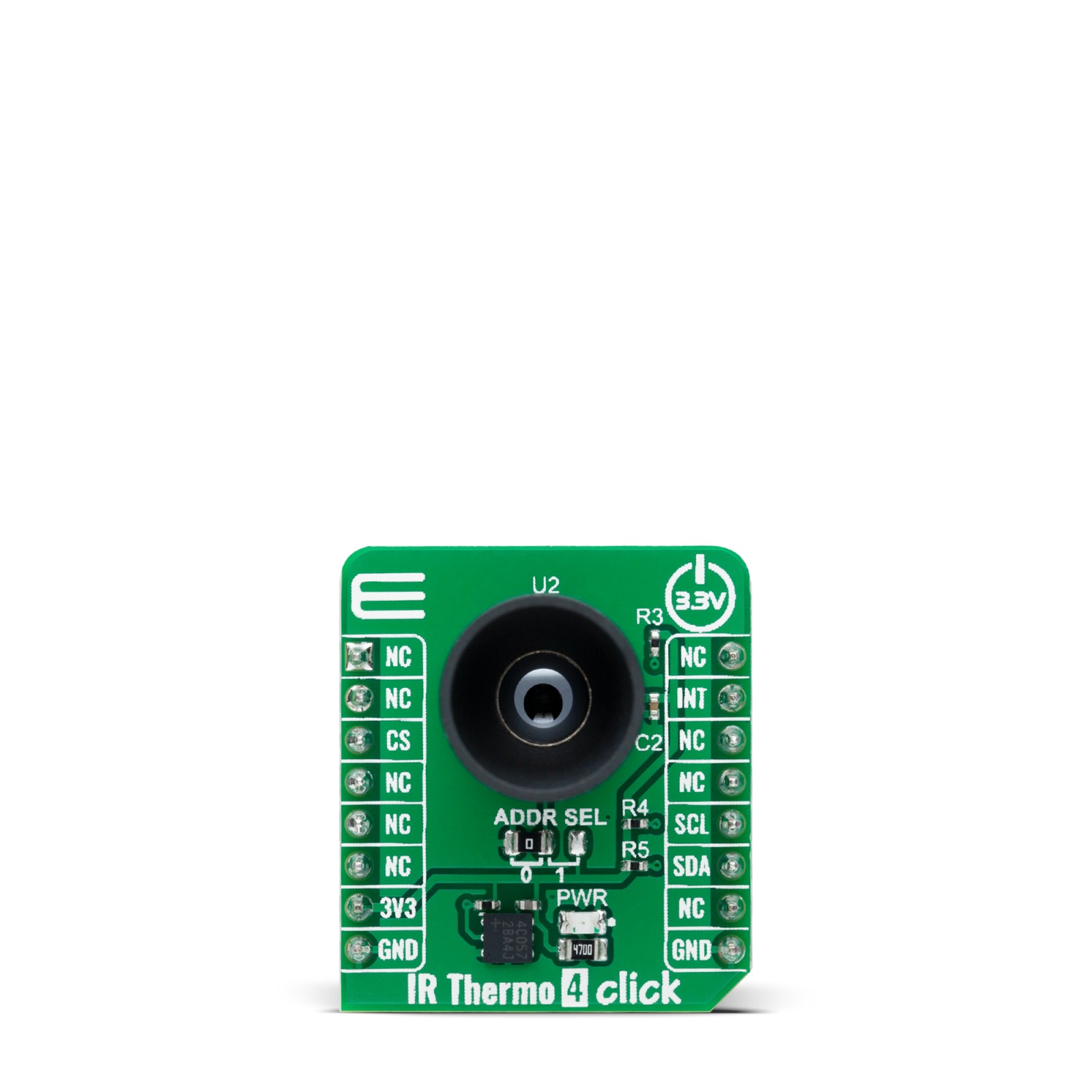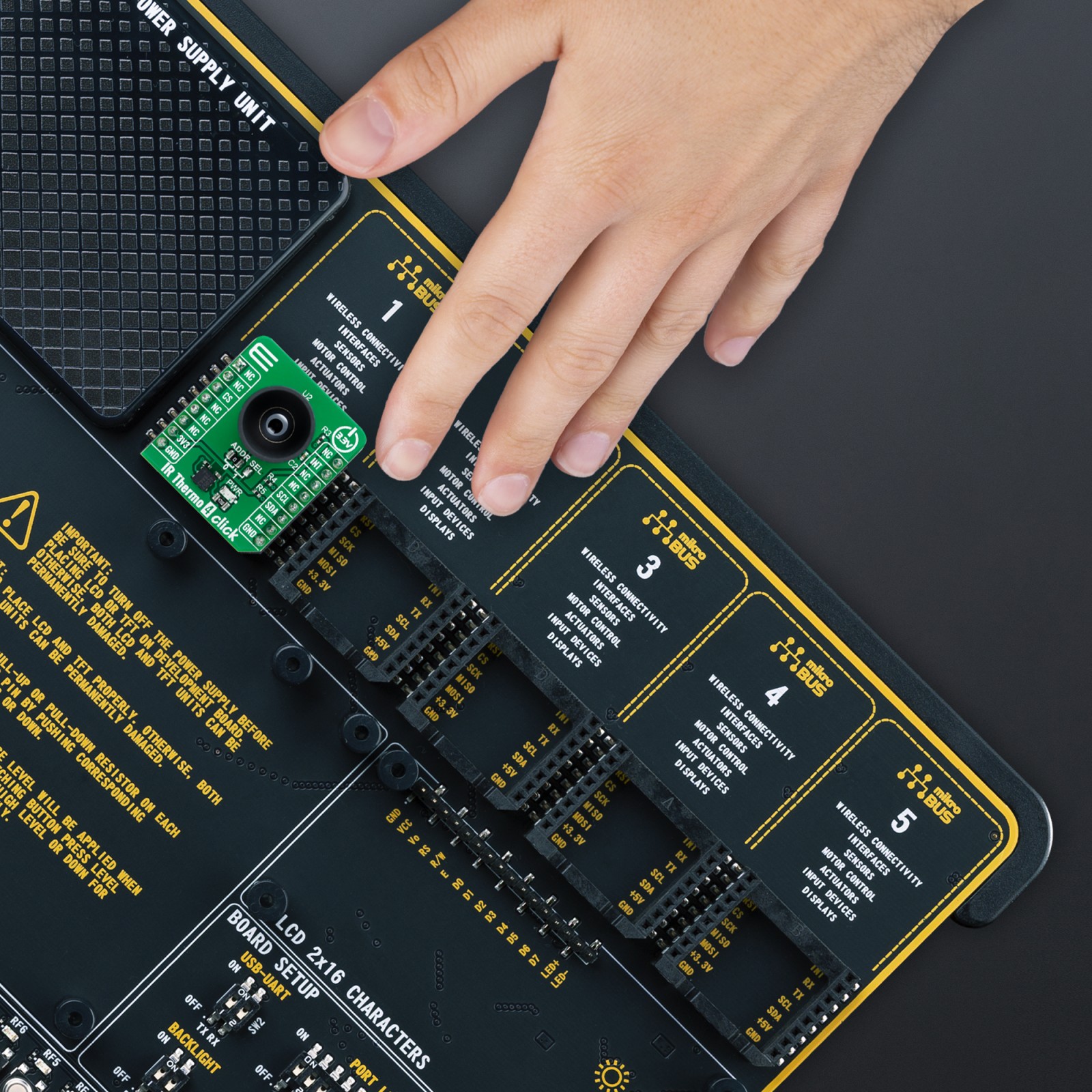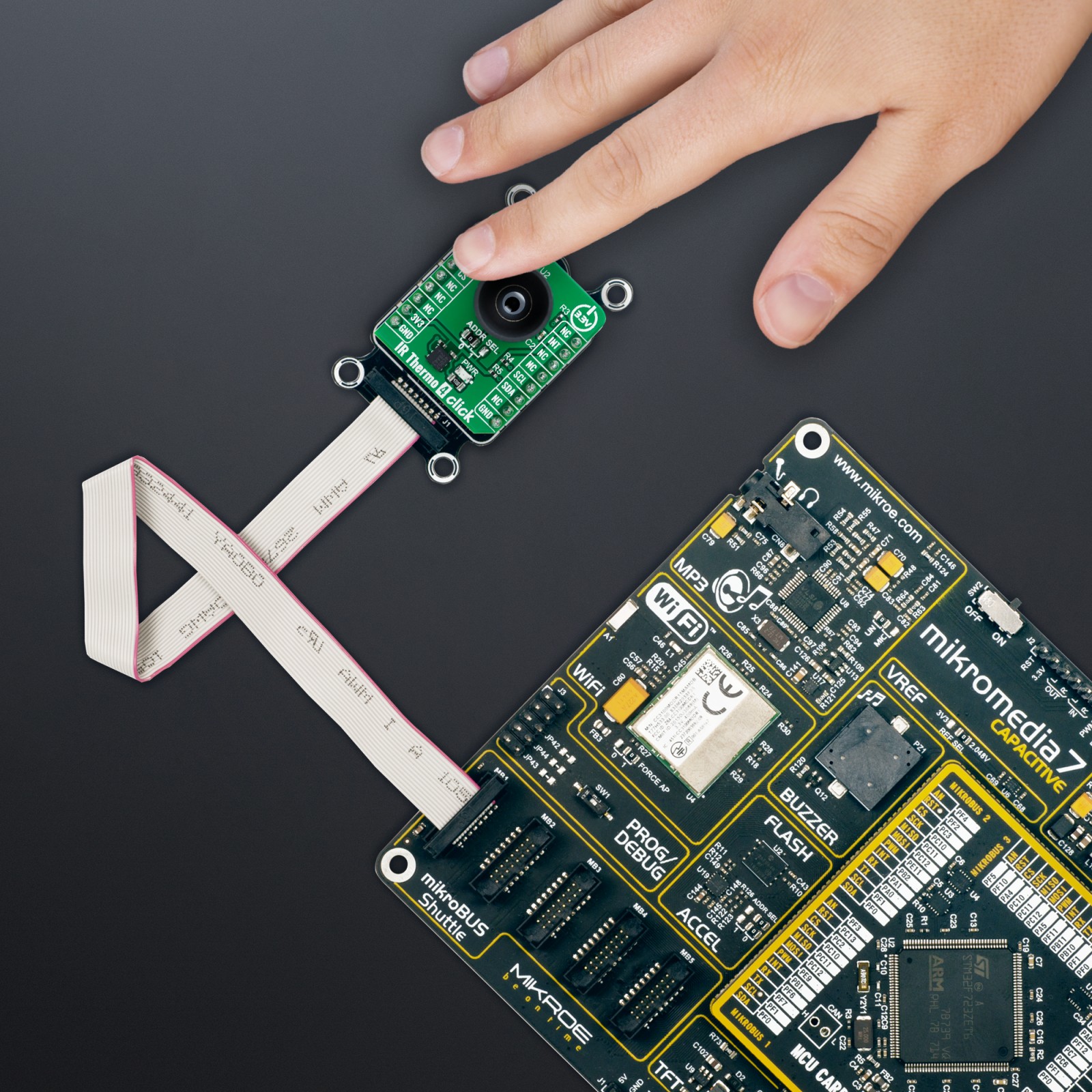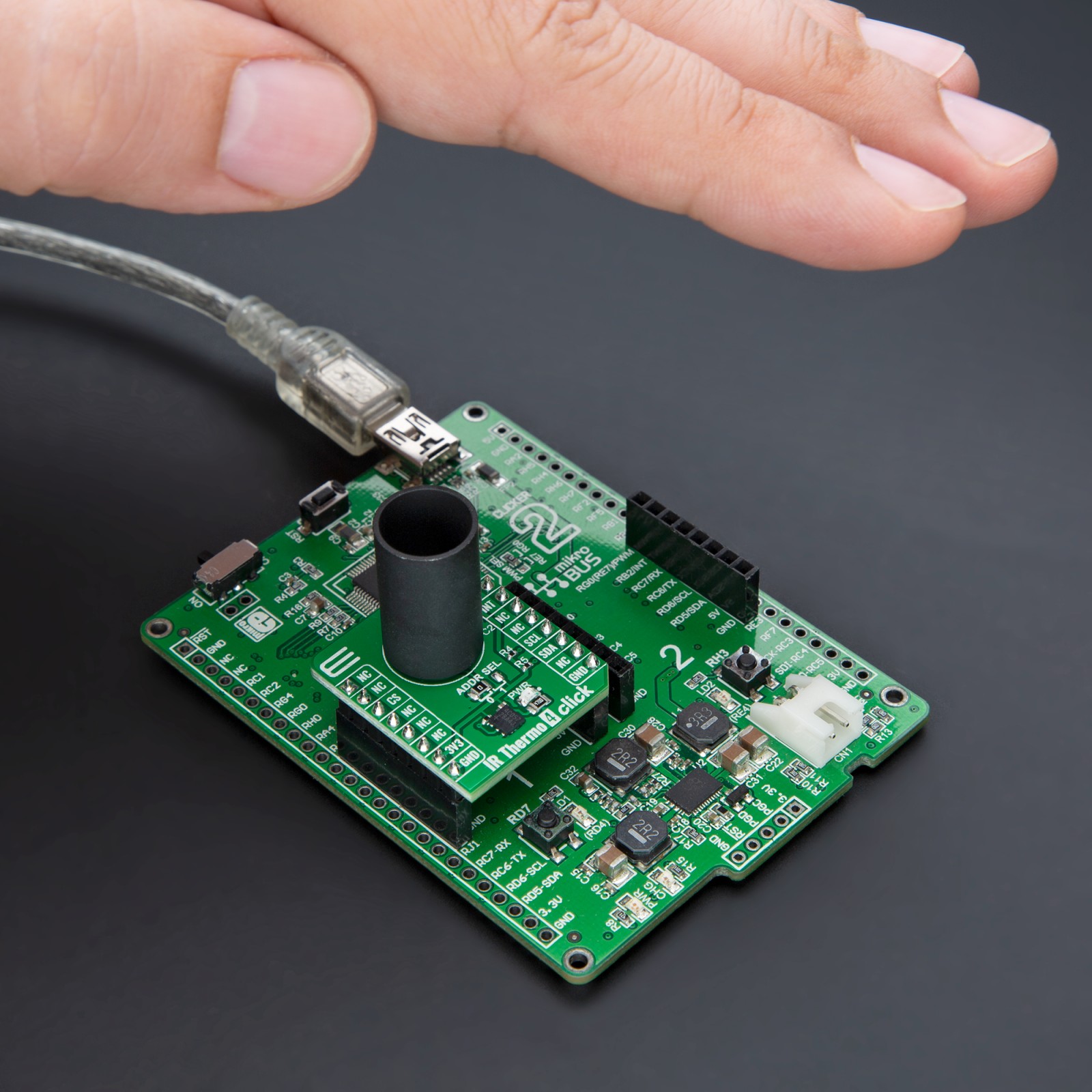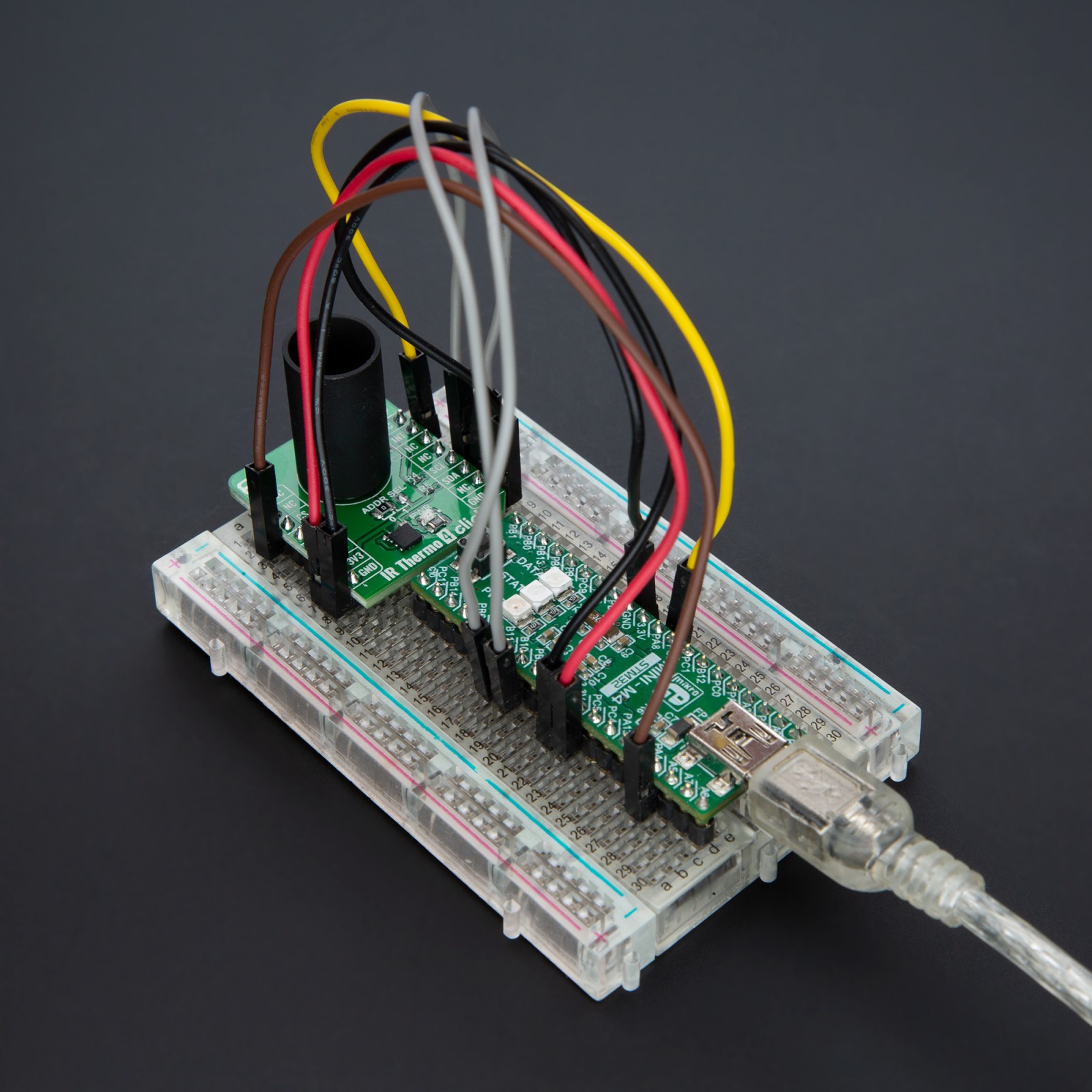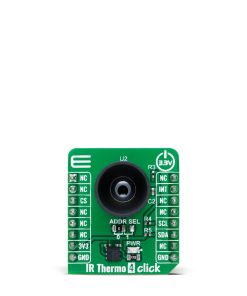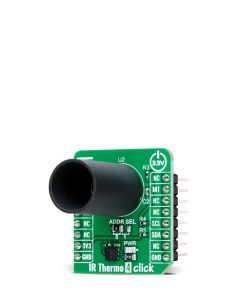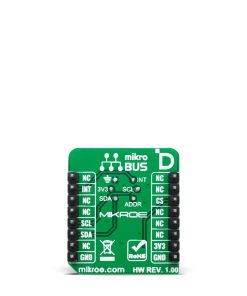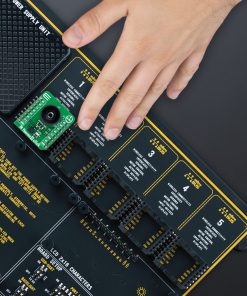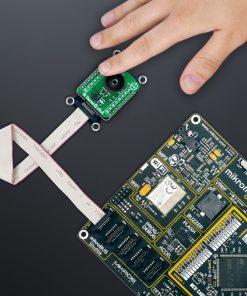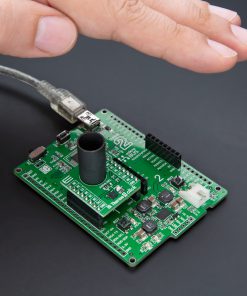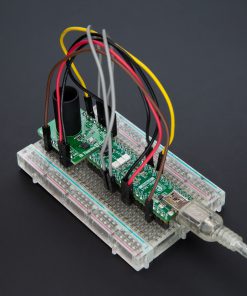Subtotal: R2,060.00
IR Thermo 4 Click
R840.00 ex. VAT
IR Thermo 4 Click is a compact add-on board for precise remote sensing applications. This board features the TPiS 1T 1386 L5.5 H thermopile sensor from Excelitas, known for its high accuracy and narrow 5° field of view (FoV). This sensor, part of the CaliPile™ family, features factory-calibrated data stored in EEPROM, ensuring reliable and accurate performance. The sensor also comes in an isothermal TO-39 package with an integrated lens hood for minimized stray light and enhanced thermal stability, making it ideal for challenging environmental conditions. With a built-in ADC and multiple filter options, the sensor’s data is easily accessible via an I2C interface. IR Thermo 4 Click is well-suited for remote skin temperature monitoring, over-temperature protection, human presence sensing, and motion detection.
IR Thermo 4 Click is fully compatible with the mikroBUS™ socket and can be used on any host system supporting the mikroBUS™ standard. It comes with the mikroSDK open-source libraries, offering unparalleled flexibility for evaluation and customization. What sets this Click board™ apart is the groundbreaking ClickID feature, enabling your host system to seamlessly and automatically detect and identify this add-on board.
Stock: Lead-time applicable.
| 5+ | R798.00 |
| 10+ | R756.00 |
| 15+ | R714.00 |
| 20+ | R687.12 |

 MPU 9DOF Click
MPU 9DOF Click  Alcohol 3 Click
Alcohol 3 Click  BEE Click
BEE Click 